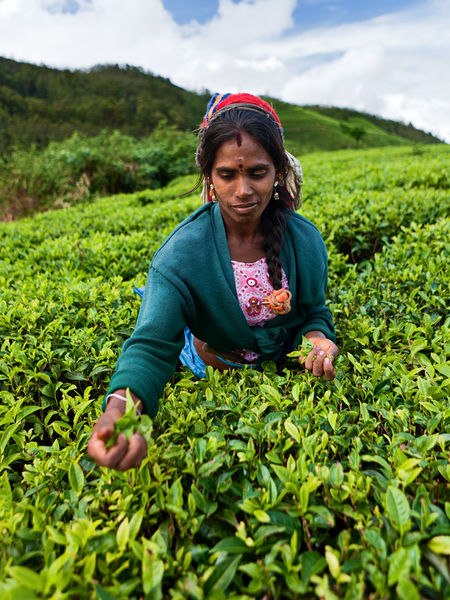Bried History of Indian Tea

Long before the commercial production of tea started in India in the late 1830s, the tea plant was growing wild in the jungles of north east Assam. In 1598, a Dutch traveller, Jan Huyghen van Linschoten, noted in a book about his adventures that the Indians ate the leaves as a vegetable with garlic and oil and boiled the leaves to make a brew.
In 1788, the British botanist, Joseph Banks, reported to the British East India Company that the climate in certain British-controlled parts of north east India was ideal for tea growing. However, he seems to have missed the fact that the plant was a native to Bengal and suggested transplanting tea bushes from China. But his idea was ignored.
In 1823 and 1831, Robert Bruce and his brother Charles, an employee of the East India Company, confirmed that the tea plant was indeed a native of the Assam area and sent seeds and specimen plants to officials at the newly established Botanical Gardens in Calcutta. But again, nothing was done - perhaps because the East India Company had a monopoly on the trading of tea from China and, as they were doing very nicely, probably saw no reason to spend time and money elsewhere.
But in 1833, everything changed. The company lost its monopoly and suddenly woke up to the fact that India might prove a profitable alternative. A committee was set up, Charles Bruce was given the task of establishing the first nurseries, and the secretary of the committee was sent off to China to collect 80,000 tea seeds. Because they were still not sure that the tea plant really was indigenous to India, committee members insisted on importing the Chinese variety.
The seeds were planted in the Botanical Gardens in Calcutta and nurtured until they were sturdy enough to travel 1000 miles to the newly prepared tea gardens. Meanwhile, up in Assam, Charles Bruce and the other pioneers were clearing suitable areas of land on which to develop plantations, pruning existing tea trees to encourage new growth, and experimenting with the freshly plucked leaves from the native bushes to manufacture black tea. Bruce had recruited two tea makers from China and, with their help, he steadily learnt the secrets of successful tea production.
The conditions were incredibly harsh. The area was remote and hostile, cold in winter and steamy hot in summer. Tigers, leopards and wolves constantly threatened the lives of the workers, and the primitive settlements of the tea workers were subject to regular raids by local hill tribes. But they persevered and gradually the jungle was opened up, the best tea tracts cultivated under the light shade of surrounding trees, and new seedlings planted to fill gaps and create true tea gardens.
Ironically, the native plants flourished, while the Chinese seedlings struggled to survive in the intense Assam heat and it was eventually decided to make subsequent plantings with seedlings from the native tea bush. The first twelve chests of manufactured tea to be made from indigenous Assam leaf were shipped to London in 1838 and were sold at the London auctions. The East India Company wrote to Assam to say that the teas had been well received by some "houses of character", and there was a similar response to the next shipment, some buyers declaring it "excellent".
Having established a successful industry in Assam's Brahmaputra valley, with factories and housing settlements, the Assam Tea Company began to expand into other districts of north east India. Cultivation started around the town of Darjeeling in the foothills of the Himalayas in the mid 1850s. By 1857, between 60 and 70 acres were under tea and, whereas the China variety of the tea plant had not liked the conditions in Assam, here at elevations of 2500 to 6000 feet, it grew well. The company pushed on into Terai and Dooars and even into the remote Kangra valley, 800 miles west of Darjeeling.
In the south western tip of the country, experimental plantings had been made in 1835, while the first nurseries were being established in Assam, and by the mid 1850s tea was growing successfully alongside coffee. The climate of the Nilgiri Hills, or Blue Mountains, seemed to suit the plant, and the area under tea steadily expanded.
In 1853, India exported 183.4 tons of tea. By 1870, that figure had increased to 6,700 tons and by 1885, 35,274 tons. Today, India is one of the world's largest producers of tea with 13,000 gardens and a workforce of more than 2 million people.
